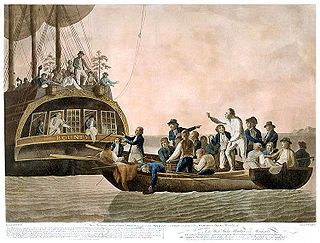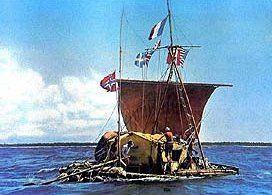Nonviolence as Compliance
Ta-Nehisi Coates, The Atlantic
Apr 27, 2015
I turn on the news and I see politicians calling for young people in Baltimore to remain peaceful and “nonviolent.” These well-intended pleas strike me as the right answer to the wrong question. To understand the question, it’s worth remembering what, specifically, happened to Freddie Gray. An officer made eye contact with Gray. Gray, for unknown reasons, ran. The officer and his colleagues then detained Gray. They found him in possession of a switchblade. They arrested him while he yelled in pain. And then, within an hour, his spine was mostly severed. A week later, he was dead. What specifically was the crime here? What particular threat did Freddie Gray pose? Why is mere eye contact and then running worthy of detention at the hands of the state? Why is Freddie Gray dead?
The people now calling for nonviolence are not prepared to answer these questions. Many of them are charged with enforcing the very policies that led to Gray’s death, and yet they can offer no rational justification for Gray’s death and so they appeal for calm.
…
When nonviolence is preached as an attempt to evade the repercussions of political brutality, it betrays itself. When nonviolence begins halfway through the war with the aggressor calling time out, it exposes itself as a ruse. When nonviolence is preached by the representatives of the state, while the state doles out heaps of violence to its citizens, it reveals itself to be a con. And none of this can mean that rioting or violence is “correct” or “wise,” any more than a forest fire can be “correct” or “wise.” Wisdom isn’t the point tonight. Disrespect is. In this case, disrespect for the hollow law and failed order that so regularly disrespects the community.
Baltimore’s violent protesters are right: Smashing police cars is a legitimate political strategy
by Benji Hart, Salon
Tuesday, Apr 28, 2015 10:08 AM EST
I’m overwhelmed by the pervasive slandering of protesters in Baltimore this weekend for not remaining peaceful. The bad-apple rhetoric would have us believe that most Baltimore protesters are demonstrating the right way-as is their constitutional right-and only a few are disrupting the peace, giving the movement a bad name.
This spin should be disregarded, first because of the virtual media blackout of any of the action happening on the ground, particularly over the weekend. Equally, it makes no sense to cite the Constitution in any demonstration for Black civil rights (that document was not written about us, remember?), but certainly not one organized specifically to call attention to the fact that the state breaks its own laws with regard to the oppressed on a nearly constant basis.
…
Non-violence is a type of political performance designed to raise awareness and win over sympathy of those with privilege. When those on the outside of struggle-the white, the wealthy, the straight, the able-bodied, the masculine-have demonstrated repeatedly that they do not care, are not invested, are not going to step in the line of fire to defend the oppressed, this is a futile political strategy. It not only fails to meet the needs of the community, but actually puts oppressed people in further danger of violence.Militance is about direct action which defends our communities from violence. It is about responses which meet the political goals of our communities in the moment, and deal with the repercussions as they come. It is about saying no, firmly drawing and holding boundaries, demanding the return of stolen resources. And from Queer Liberation and Black Power to centuries-old movements for Native sovereignty and anti-colonialism, it is how virtually all of our oppressed movements were sparked, and has arguably gained us the only real political victories we’ve had under the rule of empire.
We need to clarify what we mean by terms like “violence” and “peaceful.” Because, to be clear, violence is beating, harassing, tazing, assaulting and shooting Black, trans, immigrant, women, and queer people, and that is the reality many of us are dealing with daily. Telling someone to be peaceful and shaming their militance not only lacks a nuanced and historical political understanding, it is literally a deadly and irresponsible demand.
…
When the free market, real estate, the elected government, the legal system have all shown you they are not going to protect you-in fact, that they are the sources of the greatest violence you face-then political action becomes about stopping the machine that is trying to kill you, even if only for a moment, getting the boot off your neck, even if it only allows you a second of air. This is exactly what blocking off streets, disrupting white consumerism, and destroying state property are designed to do.Black people know this, and have employed these tactics for a very, very long time. Calling them uncivilized, and encouraging them to mind the Constitution is racist, and as an argument fails to ground itself not only in the violent political reality in which Black people find themselves, but also in our centuries-long tradition of resistance, one that has taught effective strategies for militance and direct action to virtually every other current movement for justice.
And while I don’t believe that every protester involved in attacking police cars and corporate storefronts had the same philosophy, or did what they did for the same reasons, it cannot be discounted that when there is a larger national outcry in defense of plate-glass windows and car doors than for Black young people, a point is being made. When there is more concern for white sports fans in the vicinity of a riot than the Black people facing off with police, there is mounting justification for the rage and pain of Black communities in this country.
…
I rolled my eyes when inquiries in Ferguson “shockingly” revealed racist emails sent throughout local government, including higher-ups in the Police Department. I think many of us knew the inquiry of virtually any police department would yield almost identical findings. The riots in Baltimore have many drawing parallels between policy and conduct in both cities now. What kind of action brought to light for the less affected what Black people have always known? What kinds of actions will it take to make it widely understood that all policing is racist terror, and justice can only come with its permanent abolition?
Is Violence Ever Justified? Does Violence Ever Solve Anything?
by Ian Welsh
2015 April 28
I notice a fair number of sweet, well-meaning people saying “violence is never justified.”
…
In practical terms, that must mean that you believe that every politician who voted for war is more unethical than any rioter. You must believe that George W. Bush and Barack Obama are far fouler individuals than any rioter.Ethical outrage must be proportionate to the violence and the violence in Baltimore is nothing compared to the scale of the Iraq War, or Afghanistan, or drone murders. Nor is it anything compared to the scale of police violence against Americans, especially African-Americans.
…
What most people really mean is that they condemn non-state sanctioned violence, except sometimes, like, say, in the American Revolution, or the Maidan protests.In fact, they approve of some violence and not of other violence. Most such people, were you to dig down hard enough, are hypocrites, but some aren’t, even if one disagrees with them. If you were to allow the USSR the right to crush revolutions along with the US, and condemn the American revolution, you wouldn’t be a hypocrite, just not a very nice person.
Trying to argue about popular will and/or democracy is a slippery road, mind. For example, the numbers on the American revolution with which I’m familiar don’t show the majority of the population being for leaving British rule. Maidan overthrew a democratically elected government in the Ukraine and the French revolution was made by the Paris mob, while most people living in rural areas of France (the vast majority of the population) would have preferred to keep the Ancien Regime.
Relatedly, violence often does solve problems. The Native Americans cleansed from North America were “problems” to the settlers, and violence dealt with that problem just fine. Fascist Germany was a problem to most non-German countries, Jews, Gypsies, Socialists, Gays, and many others and violence solved that problem. Carthage was a problem to Republican Rome and violence solved that problem.
And riots, rather better organized than the Baltimore ones, granted, solved the Parisian problem with the old Regime, while the Terror, terrible as it was, did make sure that there was to be no going back-even if France was to alternate between Republics and Empires for some time.
Violence often solves problems and it often does so rather permanently.


 1947 Thor Heyerdahl and five crew mates set out from Peru on the
1947 Thor Heyerdahl and five crew mates set out from Peru on the